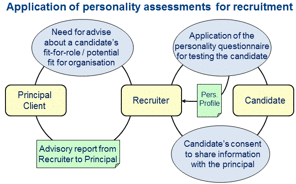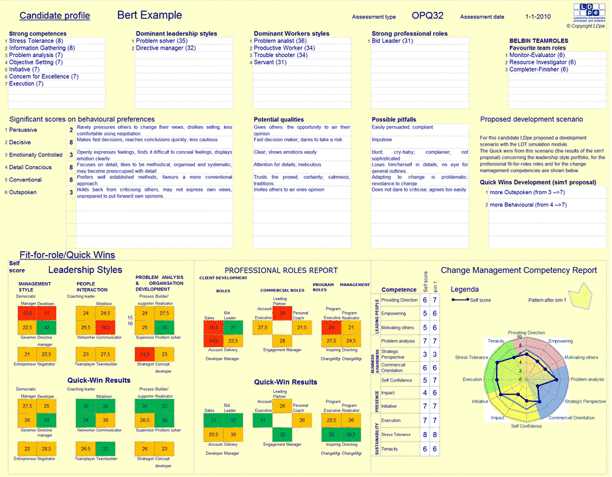WHAT IS DIFFERENT ?
The LDT is a unique instrument for self development, not comparable to any other tool. However, since the LDT makes use of a personality measurement, some people (especially HR- or recruitment professionals) tend to compare it with the tools that thety usually exploit for assessing and selecting candidates for functions and roles.
Yes, the LDT certainly can be used in selection processes. It even has more options that the other selection instruments fail: it provides insight into the development perspective of the candidates.
But, the main use of the LDT is very different from the other type of instruments, that are used for collecting information about the assessed candidates to be used by others than the candidate him/herself.
WHO IS THE CLIENT?
What is different?
As you can see, the LD-Toolbox can be applied in different situations. Besides for the development of individuals, the toolbox may be used for an organisational goal, for instance, to effectivize a sales organisation or for putting the right people in the right place.
Who is the user?
The LDT-process starts with completing a personality questionnaire (e.g. OPQ32, Dimensions, Shapes Executive or Papi 3). This questionnaire results in a personality profile. Such assessments are widely used by recruiters and coaches.
The recruiter is the advisor of the Principal, who wants to hire or select the best candidate(s). The information produced in this assessment will be used for supporting the recruiter in the advisory role. Also if the assessment is used for coaching reasons, the coach is the real user, supporting his/her advice to the coachee.
The LDT is mainly a tool for self-development!
The fundamental difference between the LDT-process and the usual ways to apply personality profiles is, that the participant in the LDT-proces is the owner and the engine in the process: the LDT is meant for self-development. And... the snapshot of the assessment is just a starting point for a development process.
WHAT IS DIFFERENT: NOT JUST A SNAPSHOT,
BUT AN ADVANCED DEVELOPMENT TOOLBOX
BUT AN ADVANCED DEVELOPMENT TOOLBOX
The LDT provides abundant information from different angles, meant for giving insight to the participant about him/herself, including all types of analysis how the different scores on, for instance Leadership Styles, Competences and Behavioural preferences, relate and what the consequences could be if such preferences deliberately are adjusted/changed.
A unique feature of the LDT is, that it supports the participant in his/her self-development by providing simulation scenarios and shows the effects of the proposed scenarios.
By deliberately adjusting some behavioural preferences, the participant is able to strengthen his/her competences and to grow the personal style- and roles portfolio.
But, of course, the LDT can be used as well for the cause of decision support. Interesting, though, is that the provided assessment information may also include information about the candidate's development potential. See the example below.
Example of an overview report about a participant
The above report, produced by the MI-module (MI = Management Information) may, for instance, be used in a selection process, it shows us an overview of the participant's fitness-for-role.1) But, it also shows the quick improvements the participant may be able to realise by changing a few of his/her behavioural preferences: more outspoken and more behavioural.2)
1) See Fit-for-Role/Quick-Wins, Professional Roles Report, Client Development Roles:
The participant is (today) not fit for a Sales or Account Management Role.
2) If the participant would learn to clearly express his/her opinion and find out more about the background of people's behaviour, he/she will qualify for more role-types, including the Sales-role.








